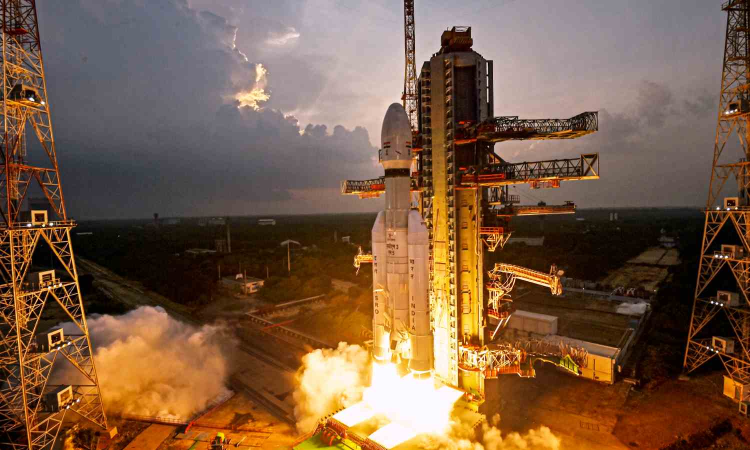ISRO flexes indigenous muscle
India’s share in the global market is valued at approximately $8.4 billion, or a mere 2%, and targeting to grow it to about 8% to 10% in the next 10 years will indeed be a tall order, but not an impossible one to achieve.

Representative Image (PTI)
The Indian Space Research Organisation has done some flexing of muscles with the launch of the heaviest communication satellite, weighing about 4410 kg, from Indian soil. No mean achievement it is. The Launch Vehicle Mark-3 or LVM3, a three-stage medium-lift launch vehicle developed by ISRO, is a time-tested warhorse that, in the past, had launched the Chandrayaan-3 mission, making India the first country to land successfully near the lunar South Pole. This time around, it has launched the communication satellite CMS-03, a multi-band communication satellite, which will be providing real-time connectivity between naval assets and shore-based command centres. More importantly, it will boost situational awareness, which is critical for the country nurturing ambitions of strengthening its position as a dominant player and security provider in the Indian Ocean region.
ISRO chairman V Narayanan has rightly described the launch as yet another “shiny example” of Atmanirbhar Bharat because the indigenously developed launch vehicle and satellite go on to reinforce India’s R&D prowess to design and develop more advanced systems. In March this year, the national space agency announced a major breakthrough in the design and development of a semicryogenic engine with high thrust, which will be not only cost-effective but also more powerful than traditional engines. Approved way back in December 2008, the semicryogenic project was ready for performance evaluation tests only in March 2025, and now the ISRO chief has announced that the ignition of the thrust chamber in LVM3 was done. Besides semicryogenic engines, ISRO has been making progress with regard to another breakthrough technology, namely, the electric propulsion system, which would replace the chemical propulsion system.
Thanks to the government’s initiative to open up the space sector for private players, over 300 new and emerging start-ups have sprung up to provide the required heft to Indian space ambitions. For instance, IIT Madras–incubated space start-up Agnikul Cosmos has developed the Agnibaan launch vehicle and, more importantly, the Agnilet engine, which is said to be the world’s first single-piece, 3D-printed, semi-cryogenic rocket engine.
Besides playing an important role in the country’s defence system through the launch of communication satellites for the Indian Navy or conjuring and operationalising India’s interplanetary missions, ISRO has been eyeing the commercial market. Between January 2015 and December 2024, it reportedly generated nearly $143 million in foreign exchange revenue through the launch of 393 foreign satellites on a commercial basis for 34 countries, including the United States, the United Kingdom, Singapore, and several other developed nations. Despite being a government organisation, ISRO has been nimble enough to make rapid strides. For full realisation of the industry’s commercial potential, the private sector needs to chip in. Since large corporates are reluctant to enter the space sector, it is left to start-ups, who are again supported by the Indian government’s funding, like the dedicated Rs 1,000-crore venture capital fund managed by the Indian National Space Promotion and Authorisation Centre, or IN-SPACe, and the Rs 500-crore Technology Adoption Fund. India’s share in the global market is valued at approximately $8.4 billion, or a mere 2%, and targeting to grow it to about 8% to 10% in the next 10 years will indeed be a tall order, but not an impossible one to achieve.



